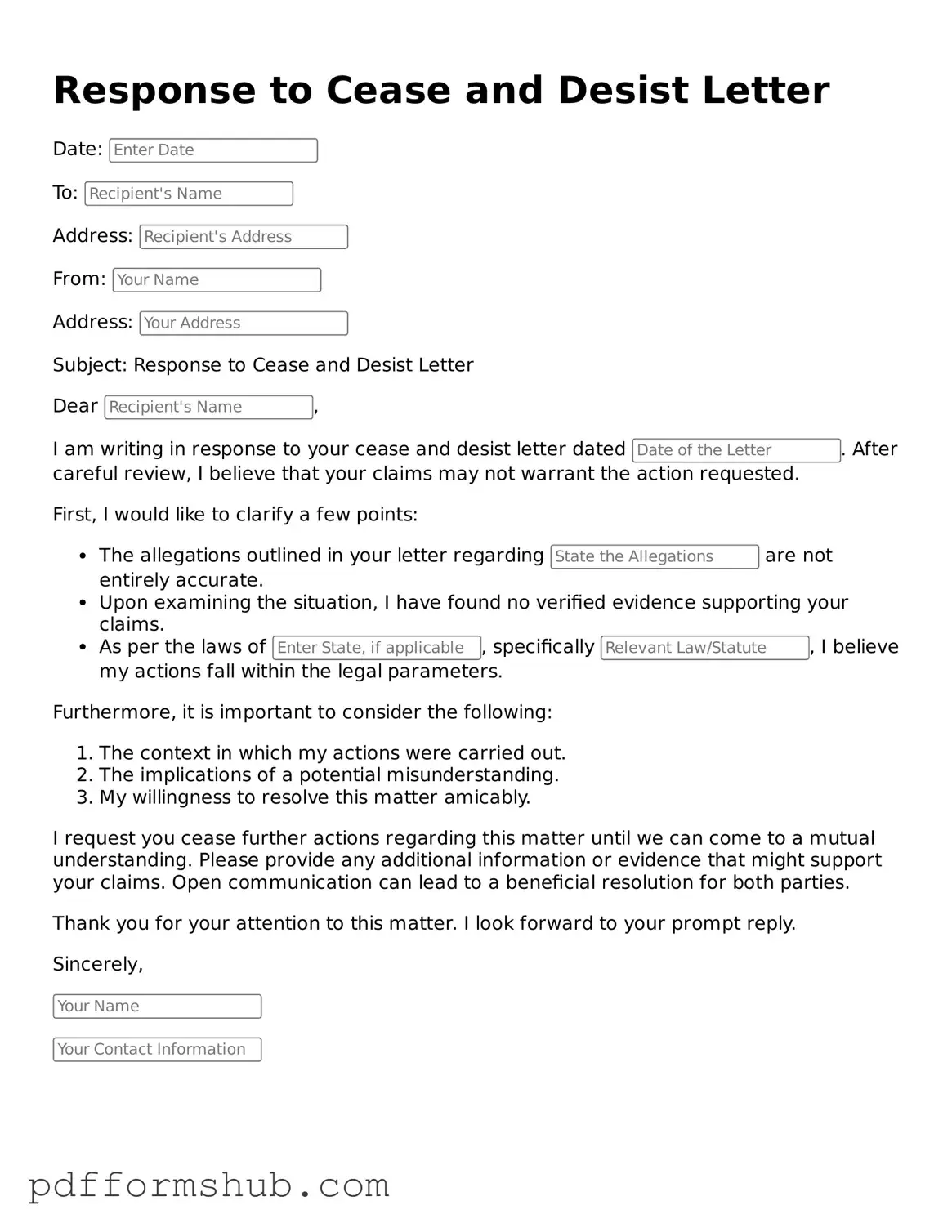Receiving a cease and desist letter can be a daunting experience, often signaling a serious dispute or potential legal issue. This formal document typically asserts that a person or organization believes another party is engaging in activities that infringe upon their rights, whether that be intellectual property, personal rights, or other legal claims. Responding appropriately is crucial. The Response to a Cease and Desist Letter form serves as a structured way to address the allegations presented. It allows the recipient to outline their position clearly, whether they intend to comply, dispute the claims, or seek clarification on the matter. Key components of this form include identifying the parties involved, summarizing the original claims, and providing a detailed response that articulates the recipient's perspective. This can also involve presenting evidence or arguments that support their case. Ultimately, using this form effectively can help in negotiating a resolution or, at the very least, documenting the response for future reference. Understanding its components and implications can empower individuals and businesses to navigate the complexities of legal communications with confidence.
